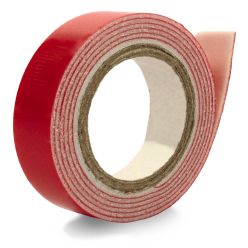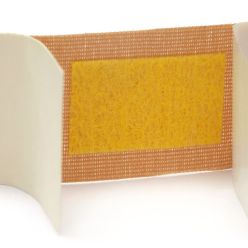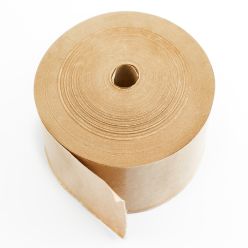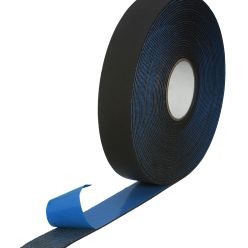
About tape
Imagine a functional, nearly invisible sheet
A continuous flexible strip of cloth, paper, metal foil or plastic film, coated on one or both sides with an aggressive, permanently tacky adhesive. It will stick to almost anything by applying light pressure and does not need any drying or curing time. It can stay in place permanently or be removed tracelessly after use. It usually comes in roll or sheet form but can be produced in any imaginable shape.
Tape is often the hidden driver of product innovation in many applications and industries. It can be utilised in so many more ways than it is in the traditional home, office and industrial arenas.
What makes a tape?
An adhesive tape or film comprises a few functional layers: a carrier material as a backing, an adhesive coating and often a removable liner. See below the three types of adhesive tapes.
-
Adhesive transfer tapes
-

Picture supplied by tesa.
Adhesive transfer tapes consist of a strip of adhesive on an adhesive-repellent release liner, which is usually made of paper or foil. Transfer tapes have no backing, meaning that when the liner is removed, pure adhesive is all that remains.
-
Double-coated tapes
-

Picture supplied by tesa
Double-coated tapes consist of an adhesive on both sides of a foam, film, paper, cloth or non-woven/tissue carrier which adds dimensional stability for easier handling and dispensing. The adhesive on each side may differ in chemistry and may have the same or different coating thicknesses. The adhesive on each side of the carrier may be protected by a liner of glassine or film. Double-sided tapes allow joining of two materials back-to-back. Contrasting, even absolutely non-compatible, materials can be joined using the right tape with, for example, different types of adhesives. -
Single-coated tapes
-

Picture supplied by tesa
Single-coated tapes consist of an adhesive applied to only one side of a backing. The adhesive is protected by a silicone-coated or speciality release liner that is removed before the adhesive is put in place. Self-wound tapes do not have release liners but, if necessary, consist of a release-treated film coated on the non-treated side with an adhesive. They are wound on themselves and easily unwound. The correctly adjusted unwinding force can be an important criterion for some applications. Single-sided tapes allow bonding to a surface or joining of two adjacent or overlapping materials.
Types of adhesive
The adhesive mass of a tape is usually made of natural or synthetic rubber, an acrylate or silicone. The adhesive is one of the main components of an adhesive tape in addition to its backing.
Rubber-resin adhesives are natural- or synthetic-rubber-based, formulated with tackifying resins, oils, stabilisers and sometimes curing agents. Natural rubber adhesives are made from natural polymers derived from the Hevea brasiliensis tree. Synthetic rubber adhesives are made up of industrially manufactured synthetic thermoplastic polymers like SIS.
Acrylic adhesives are made of industrially synthesised polymers that are often mixed with a curing agent and can be specifically adjusted to produce the adhesive properties required of a product.
Silicone adhesives are similar to rubber resin but make use of silicon gum and resins.
All four adhesives are compounded and coated by tape manufacturers. In order to produce exactly what is needed for your product specifications, formulators working closely with product designers can manipulate the qualities of the adhesive mass by utilising various additives. In this manner, tapes can be made with specific properties such as ageing resistance, low temperature resistance and removability.
Adhesives performance

Types of backing
The main components of an adhesive tape are the backing and the adhesive. The backing (or carrier) material of an adhesive tape is a relatively thin, flexible web-based material coated with an adhesive.
Among the endless possibilities, the most common backing materials are paper, fabric, non-woven, laminates, foil, foam and plastic film such as PVC or polypropylene. Suppliers and manufacturers of tapes will work with you to determine the right backing to fulfil your product specifications.
Here are just a few of the possibilities for tapes according to their backing materials:










